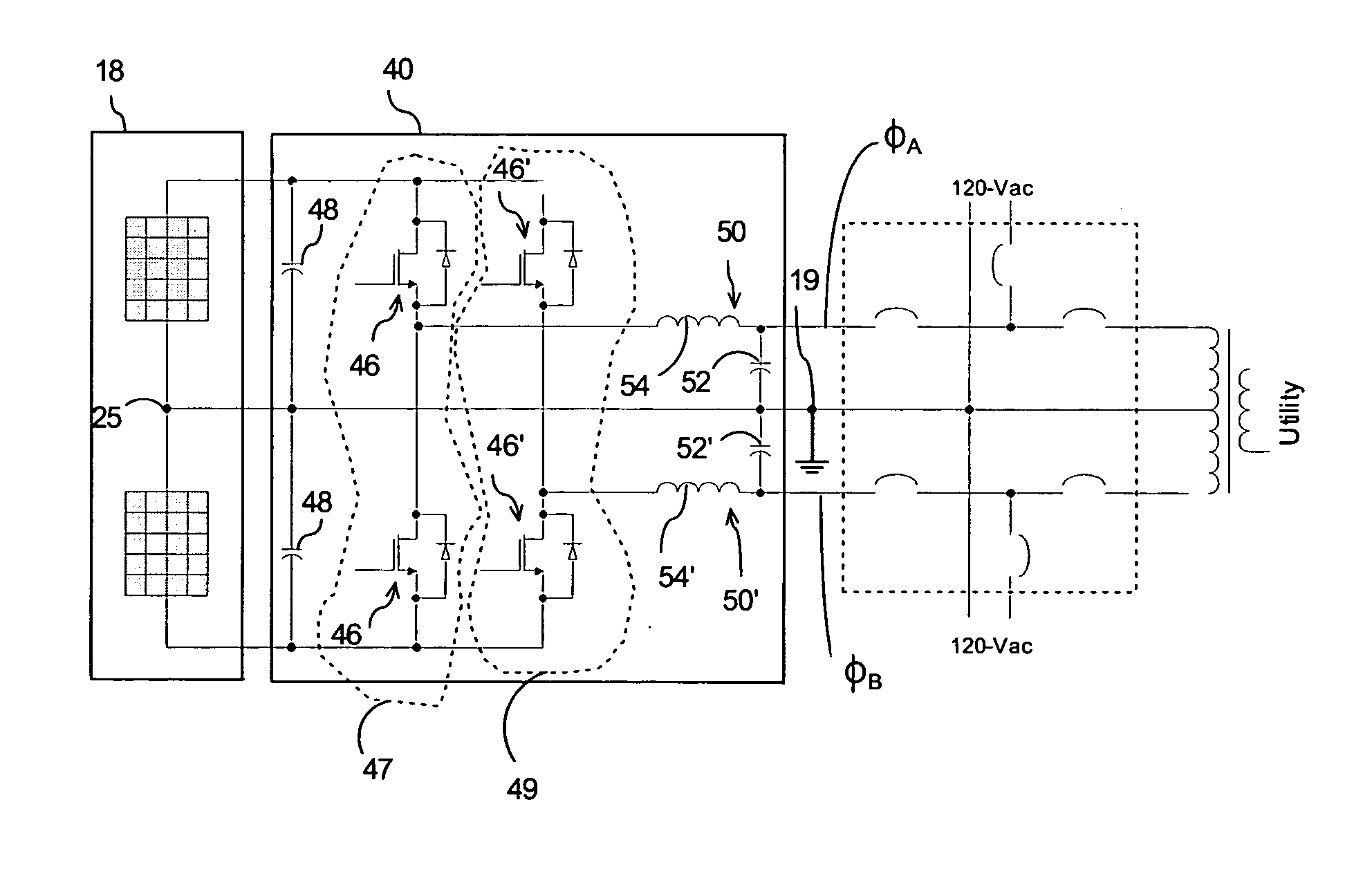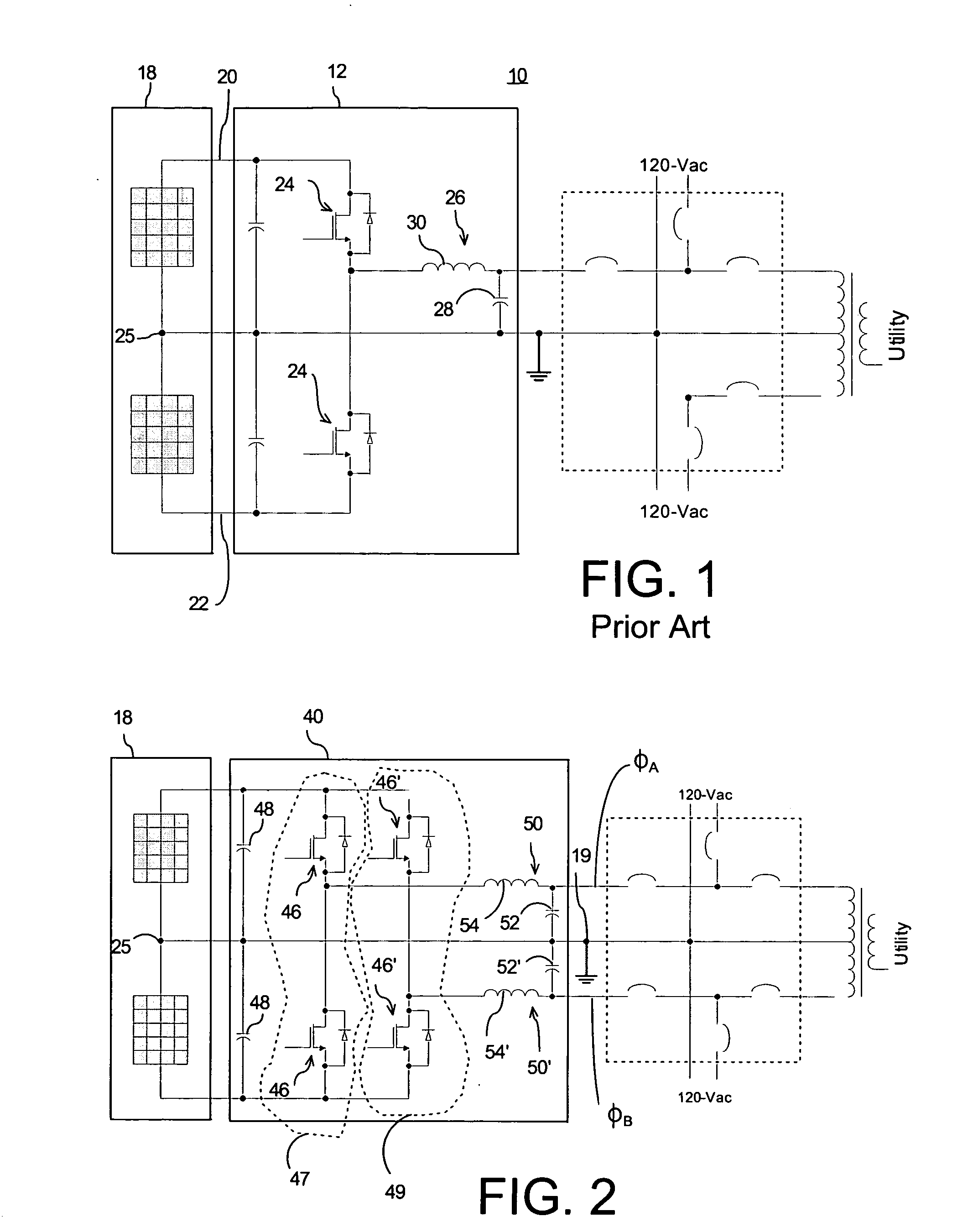Transformerless power conversion in an inverter for a photovoltaic system
a technology of transformerless power conversion and photovoltaic system, which is applied in the direction of pv power plants, semiconductor devices, transportation and packaging, etc., can solve the problems of reducing the efficiency of the power conversion process, significant energy loss, and the cost of a photovoltaic system, and achieves the effect of small filter components and less expensiv
- Summary
- Abstract
- Description
- Claims
- Application Information
AI Technical Summary
Benefits of technology
Problems solved by technology
Method used
Image
Examples
Embodiment Construction
[0017] The fact that the half bridge topology illustrated in FIG. 1 supplies power just to one side of the 120-Vac line may be acceptable for relatively low power applications, such as less than approximately 2.5 kW. However, for relatively higher power applications (such as may range from about 3 kW to about 5 kW), it may be desirable to supply power to both sides of the ac ground, such as sides ØA and ØB in FIG. 2. For example, it may be desirable to supply power to a 120-Vac grid on both sides of neutral. This can be accomplished by employing an inverter 40 comprising a full bridge topology, such as may be obtained by coupling two half bridge inverters (one on each side of neutral) as shown in FIG. 2. In this embodiment, it can be seen that power can be injected in a balanced manner into both sides of neutral while maintaining both the bipolar photovoltaic array 18 and the grid neutral point at ground potential. That is, the array and the utility grid are both grounded at a commo...
PUM
 Login to View More
Login to View More Abstract
Description
Claims
Application Information
 Login to View More
Login to View More - R&D
- Intellectual Property
- Life Sciences
- Materials
- Tech Scout
- Unparalleled Data Quality
- Higher Quality Content
- 60% Fewer Hallucinations
Browse by: Latest US Patents, China's latest patents, Technical Efficacy Thesaurus, Application Domain, Technology Topic, Popular Technical Reports.
© 2025 PatSnap. All rights reserved.Legal|Privacy policy|Modern Slavery Act Transparency Statement|Sitemap|About US| Contact US: help@patsnap.com



